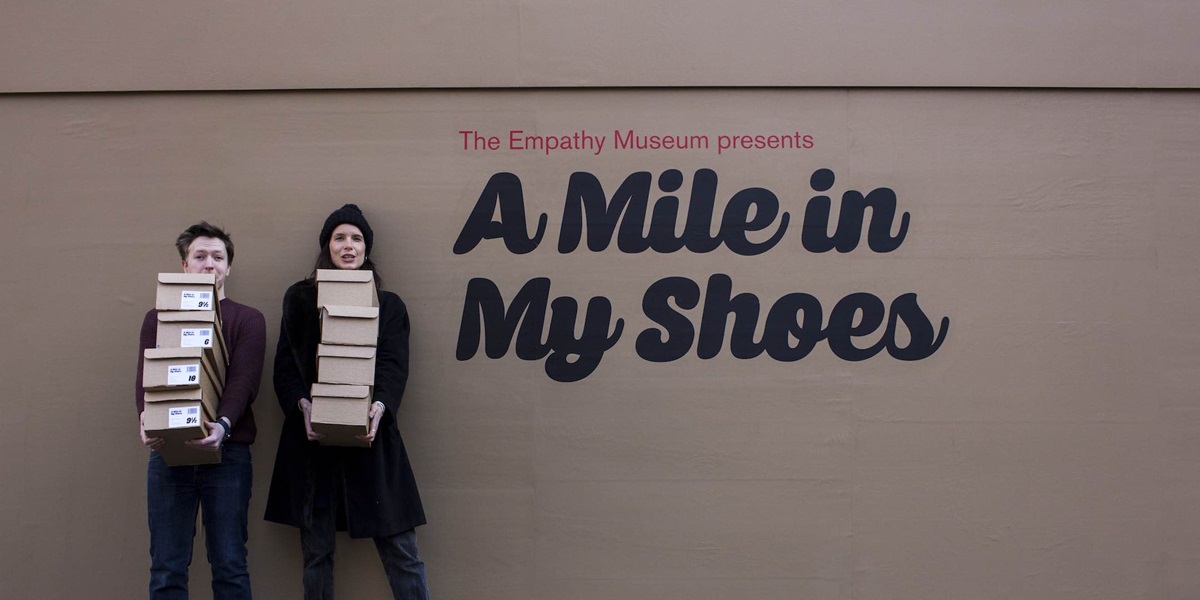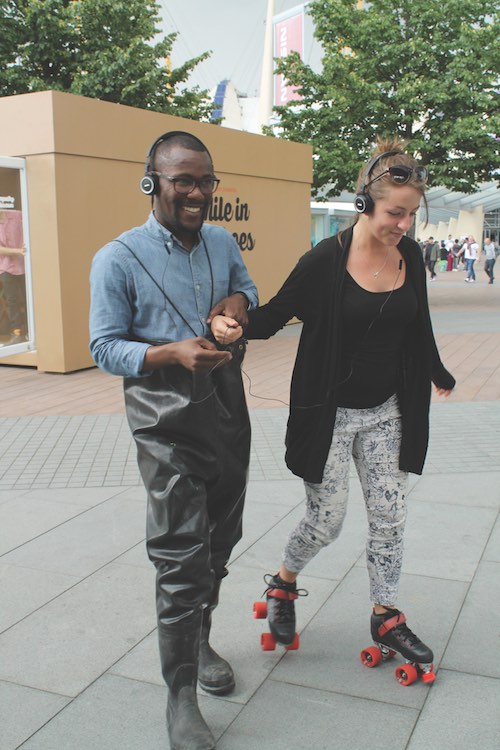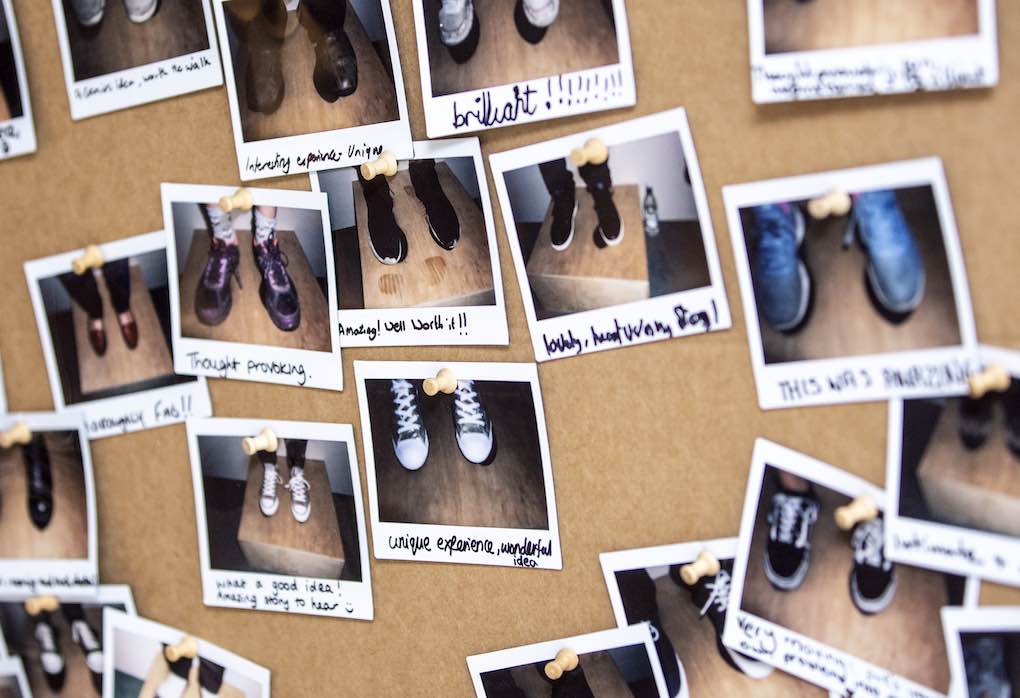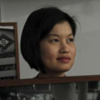
Since the Empathy Museum was founded by Roman Krznaric in 2015, its inaugural project A Mile in my Shoes has travelled to more than 35 locations across the United Kingdom and Europe, as well as New York, Denver, São Paulo, Perth and Melbourne. Now it is Sydney’s turn to host the pop-up storytelling exhibition that allows visitors to step into someone else’s shoes and discover their story.
Shoes, more than any other item of clothing, take on the material imprint of their owners and reflect the places they have been. It is little wonder, then, that to wear someone else’s shoes is a deeply personal tactile experience. This sense of embodied connection lies at the heart of the museum’s upcoming outdoor exhibition A Mile in my Shoes, which invites visitors to walk a mile in the shoes of a stranger while listening to their migration story.
Opening in January as part of the Sydney Festival, A Mile in my Shoes has been developed in collaboration with the Empathy Museum, a series of participatory art projects that encourages people to view the world from a different perspective. The museum considers how empathy can transform our personal relationships and also inspire positive action around global challenges such as prejudice, conflict and inequality. As the first experiential arts space that fosters the skill of empathising, the Empathy Museum doesn’t have a permanent home; instead, its projects are travelling pop-up installations conceived by London-based artist and curator Clare Patey and produced by Artsadmin.

A Mile in My Shoes at the London International Festival of Theatre, North Greenwich, London, 2016. Image Cat Lee
Empathy is often described as having the ability to see the world through another person’s eyes or to walk in their shoes. A Mile in my Shoes interprets this adage literally in the form of a roaming interactive exhibition housed in a giant shoebox, where visitors trade in their own footwear for those of a stranger, slip on some headphones and take a walk as the owner of the shoes shares a story about their life. Over the last five years, the exhibition has welcomed 50,000 visitors who have walked a mile in someone else’s shoes. In each city it visits, the Empathy Museum’s mobile shoe shop collects new stories, resulting in an evolving archive of audio portraits that explore both our differences and our common humanity.
In Sydney, the Australian National Maritime Museum’s migration-themed version of A Mile in my Shoes will activate our Darling Harbour forecourt and give voice to Australia’s diverse immigrant and refugee stories. The project contributes to the museum’s rich program of migration exhibitions, collections, publications and research activities, which have always used personal stories as the hook to draw out human connections, make history relevant and allow visitors to appreciate the significance of migration in the context of their own lives. A Mile in my Shoes extends this strategy, with its emphasis on personal testimony that implores others to understand ‘what it might be like to be you’.
Understanding and listening are intrinsic to both the exhibition and to Clare Patey’s work, which is focused on creating social spaces in the public realm that bring people together in conversation, participation and celebration. As Patey says:1
Public spaces for social interaction are diminishing. Cash-strapped councils are closing social facilities like libraries; our city centres are insidiously privatised; and you can even pay to jump queues where you might have to stand next to someone different to you. Social media encourages us to surround ourselves with groups of like-minded people who don’t unsettle our assumptions about the world ... With the Empathy Museum, what I am trying to do is bring people into contact with those very different to them.
This notion is especially critical in light of the COVID-19 pandemic, where a sense of social connection is more important than ever. As part of the reawakening of Sydney’s cultural scene in 2021, A Mile in my Shoes generates opportunities for storytelling, dialogue and social inclusion, and positions empathy as a fundamental skill with which to address the complexities of our interconnected global community. The exhibition features 35 engaging audio stories that encompass universal aspects of life – from loss and grief to love and hope – taking visitors on an emotive, empathetic and physical journey.

Polaroids of all the shoes in A Mile in My Shoes exhibition. Image Stephen Garnett Photography
Among the museum’s storytellers are a Catholic refugee who fled communist Vietnam on a seven-metre-long fishing boat crowded with 99 passengers, who were faced with the horrifying sight of people’s shoes floating in the water from previous failed escapes; a Scottish child migrant who was sent to a blacklisted Victorian children’s home in the 1960s; a Chinese adoptee who was raised by a white family in New Zealand and given a Caucasian name; a young Ghanaian self-taught artist whose work explores African identity; and a first-generation Australian whose great-grandfather told his granddaughter as the Germans prepared to invade Poland at the start of World War II: ‘Never judge a man unless you have walked a mile in his shoes’.
For my own walk, I put on a delicate pair of ballet flats in my size, which are trimmed with flowers and ribbons. There is a tangible feeling of connection as the voice of the storyteller speaks directly to me and I am immersed in her story. The experience invokes a process of embodied empathy that is at times unsettling and uncomfortable, but nevertheless powerfully affecting. Professor Andrea Witcomb, whose research examines concepts of affect and empathy, writes:2
Affect works through evoking, moving or touching the viewer, producing a visceral response that promotes empathy rather than just simply sympathy. Feeling empathy is a prerequisite for dialogue, for the recognition of commonalities. While sympathy can reinforce differences by operating in terms of power relations, empathy can build bridges.
The museum hopes that A Mile in my Shoes will build bridges across Australia’s diverse migrant narratives, challenge assumptions and show that everyone has a story to tell. Whose story will you uncover?
A Mile in my Shoes is a free exhibition on show from 6–31 January 2021.
References
[1] Patey C (2018) ‘Walk a mile in a stranger’s shoes: The Empathy Museum’, CAMOC Museums of Cities Review 2: 7.
[2] Witcomb A (2009) ‘Migration, social cohesion and cultural diversity: Can museums move beyond pluralism?’ Humanities Research 25(2): 4.
This exhibition is proceeding with thanks to the support of sponsors, donors and community groups.
